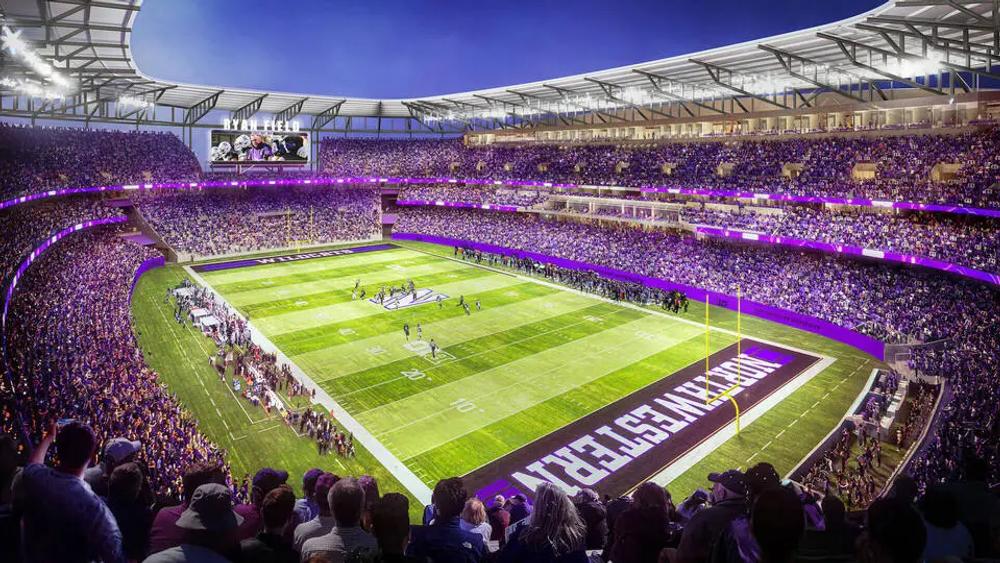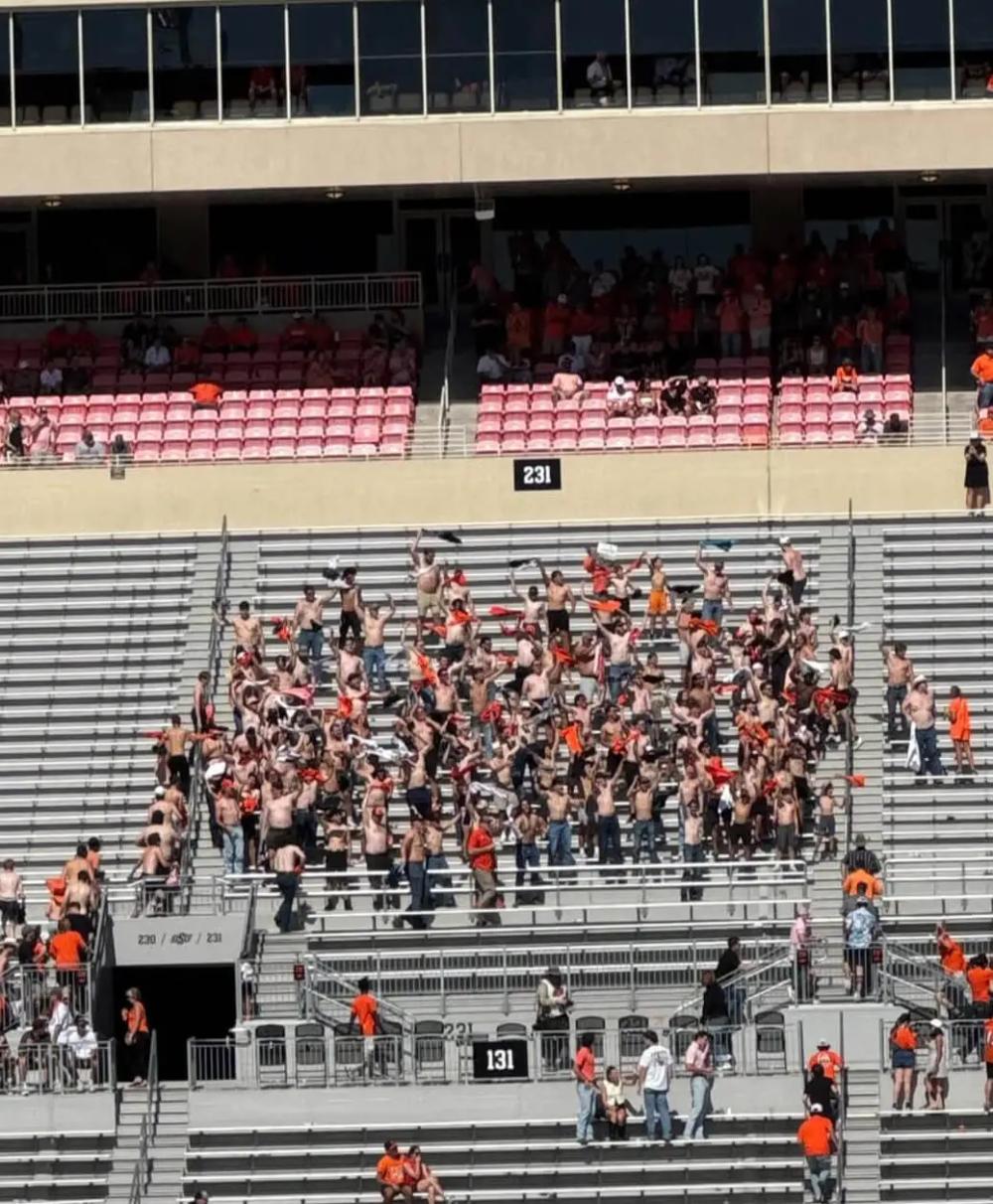The biggest trend in college and professional sports is to get smaller!
Stadiums are getting smaller. The newest stadium in the Big Ten is also going to be the smallest and that is by design. Let’s walk through why.
What’s Happening?
In a reversal of the old “bigger is better” mindset, many college football programs (and even professional teams) are now building or renovating stadiums with smaller seating capacities. Northwestern University’s Ryan Field, for instance, is being reconstructed to hold 35,000 fans instead of the previous 47,130. This shift signals a new era in stadium design, one that prioritizes atmosphere, comfort, and sustainability over sheer scale.
Shrinking stadiums isn’t just a Big Ten or college football phenomenon; it’s reshaping the broader sports landscape. The NFL, MLB, and college basketball programs are all rethinking what a modern venue should be. The Buffalo Bills, for example, are reducing capacity in their new stadium to about 62,000 seats, down from more than 71,608 at the old Highmark Stadium. Similar changes are taking place in baseball parks and basketball arenas, where the emphasis has shifted from maximizing attendance to enhancing comfort, intimacy, and the overall fan experience.
In other words, the days of Michigan’s Big House being the envy of sports is over.
| Stadium / Arena | Completion Date | Old Capacity | New Capacity | Net Change |
| Northwestern's Ryan Field | Fall 2026 | 47130 | 35000 | -25.7% |
| Buffalo Bills' New Highmark Stadium | Summer 2026 | Summer 2026 | 62000 | -13.4% |
| Florida State' Doak Campbell Stadium | Fall 2025 | 79560 | 67277 | -15.4% |
| New Yankee Stadium | May 2009 | 57,545 | 54,251 | -5.7% |
| Baylor's Foster Pavilion | January 2024 | 10,284 | 7,500 | -27.1% |
Case Study: Northwestern’s New Ryan Field

In the fall of 2024, Northwestern announced plans to build the most expensive stadium in college sports history, an $850 million project, and, paradoxically, the smallest in the Big Ten and the fourth smallest in the Power Four. At first, I thought it had to be a joke but it's not. The Ryan family, minority owners of the Chicago Bears, is determined to do more with less. “Our worst seat in this stadium is 100 feet closer to the field than the most expensive seat at the Big House,” said Pat Ryan Jr., co-CEO of Ryan Sports Development, referencing Michigan’s 107,601-seat colossus. It’s a bold vision, backed by even bolder goals. Let’s take a closer look at what makes this project so ambitious.
Acoustics and Atmosphere - With a 25% reduction in capacity, every seat gets closer to the action. This tighter design brings fans together, boosting crowd energy and creating an immersive, high-intensity experience. The goal: amplified sound, greater energy, and a true home-field advantage.
Shelter and Sound - A sweeping canopy will cover much of the seating bowl, protecting fans from the elements while capturing and enhancing crowd noise. The result is a louder, more electric atmosphere throughout the game.
Better Views - Northwestern promises “better-than-TV” sightlines, offering fans crisp, unobstructed views of the field from nearly every angle. This is achieved through steeper stadium designs and increased row heights, a technique used in the $2.3 billion Las Vegas Sphere that can be somewhat scary to witness in person.
Upgraded Amenities - New club spaces, premium lounges, and hospitality zones will elevate the game-day experience. Enhanced food and beverage options add comfort and convenience to every visit.
Accessibility and Comfort - Ryan Field will exceed ADA standards with wider concourses, additional ramps, more accessible seating, and improved restrooms, making it one of the most inclusive and comfortable stadiums in college football.
Fun Facts:
Only about 10% of seats at the new Ryan Field will be in premium clubs or suites, yet they’re expected to generate roughly 40% of the stadium’s total revenue.
The new design nearly DOUBLES the square footage PER FAN compared to the old stadium, trading cramped bleachers for more space, comfort, and overall experience.
Best of all, the entire project is privately funded, no taxpayer dollars involved. Impressive
Why Is It Happening?
The Short answer - Stadiums are getting smaller to match changing fan habits, improve experiences, avoiding embarrassment, and increasing ROI.
The Longer Answer
Shifting Fan Habits
In the age of big HD TVs and streaming, fans have more incentive to stay home, making it harder to fill giant stadiums. College football attendance declined for seven straight seasons leading up to 2020, hitting its lowest levels in decades. Even powerhouse teams noticed student sections thinning out.
Improve the Overall Experience
When Yankee Stadium opened in 2009, the capacity dropped by thousands. When asked why, a rep said, “The reason for reduced capacity is to create a better in-venue experience. Bigger seats, more leg room, larger concourses, more intimacy.”
Baylor Basketball has followed suit as well opting for a Cameron Indoor like experience. In 2024, it opened a brand-new arena that seats just 7,000 fans, significantly fewer than the 10,300-seat arena it replaced. Baylor’s athletic director said the goal with the Foster Pavilion’s smaller size is to ensure it’s “packed for games” and deafeningly loud, creating a true home-court advantage every night.
Increase the ROI
Victor Matheson, a sports economist at Holy Cross, argues the main driver is a higher return on investment. He uses the best NBA team in history, the Boston Celtics, as an example. He says two folding chairs on the floor at TD Garden can bring in as much revenue as an entire upper deck section. Jaw dropping
To hammer this point home, Northwestern’s temporary 12,000-seat stadium is already yielding four times the revenue of the old 47,000-seat Ryan Field thanks to high-end seating and experiences. Wild
Avoid Embarrassment

Traditional powerhouses have acknowledged that empty seats are an issue. During Saturday's Oklahoma State vs. Houston game, the empty seats made for a viral moment as shirtless guys got together and twirled their shirts over their heads. That typically is not the case. Typically, it's a point of embarrassment. In 2020, at the peak of their success, Alabama reduced capacity at its 101,000-seat football stadium, replacing some student bleachers with a massive video board after Coach Saban criticized student no-shows.
Increase Stadium Utilization
Northwestern only plays 7 home football games a year. There’s a BIG push to use the stadium for the other 358 days with concerts, festivals, and other events. Thus, Ryan Field reflects this vision with a versatile, multi-purpose design that keeps in mind the concert goer. Where I am sure there were thousands of bad seats at Zach Bryan’s show at the Big House last month, Ryan Field will likely be the best spot for a concert from now on.
My Thoughts:
I am hopeful that these beautifully designed stadiums will usher in a new era of excitement at the schools that embrace this trend. In the case of Northwestern’s Ryan Field, it sounds like it brings an “iPhone-like” aesthetic to the gameday experience. Fans can expect better views, improved acoustics, larger seats, and better food. That would be ideal and widely celebrated.
However, I’m skeptical that Northwestern’s vision of "premium for everybody" will truly deliver. It all sounds too good to be true. Everything comes with tradeoffs. So what are the tradeoffs here?
Like many trends today, the strongest argument for building a smaller stadium is framed in economic terms. But what looks best on paper doesn’t always produce the best outcomes, especially when there’s an emotional connection involved, as with sports. For example, I know hundreds of Buffalo Bills season ticket holders are being priced out of the new stadium, and it’s causing an uproar.
Will that happen at Ryan Field? Yes.
With fewer seats and a heavy focus on enhancing the experience, I expect fans will be priced out and ticket prices will rise. The Ryan Field project seems designed to maximize spending from each customer segment, aligning with the broader national trend of dynamic pricing made famous by Uber. Fans are really good at sniffing sincerity. So if Northwestern does try to dramatically increase revenues in a disingenuous way, fans will not be happy.
I’ll hold off on my final judgment until the stadium menu is released. Then we’ll see just how focused the stadium is on profit.
Side Note:
If you’ve made it this far, thanks for reading. Over the past few years, I’ve spent my time immersed in high school and college sports, and along the way, I’ve come across countless inspiring stories and successes that deserve to be shared. I’ll be using this space to share my thoughts on trends, best practices, and more.
Big thanks to Grant Varner for encouraging me to step into the (slightly intimidating) world of LinkedIn.
Appreciate your time,Gardner
Sources:
Northwestern reveals plans for new $850 million Ryan Field | ESPN
Northwestern University Ryan Field Redevelopment Project | HNTB
Ryan Field (stadium) | Wikipedia
Good Question: Why will the new Bills stadium have nearly 10,000 fewer seats? | WHEC News
New Highmark Stadium | Wikipedia
P4 Stadium Sizes | ACC Football RX
FSU Football Loses Major Seating Capacity in Doak Campbell Renovation | Sports Illustrated
Doak Campbell Stadium | Wikipedia
Transformation of Doak | Florida State University Athletics
Buffalo Bills New Stadium Size Plans | Sports Illustrated
Paul and Alejandra Foster Pavilion – Baylor Bears | Baylor University Athletics
Meet Dr. No | Holy Cross Magazine
First Look Inside Northwestern’s $862 Million New Ryan Field | Front Office Sports
How Billionaires Broke The NFL's Most Loyal Fans | More Perfect Union

